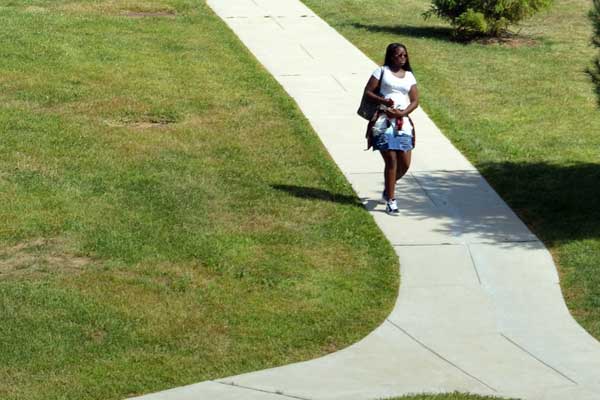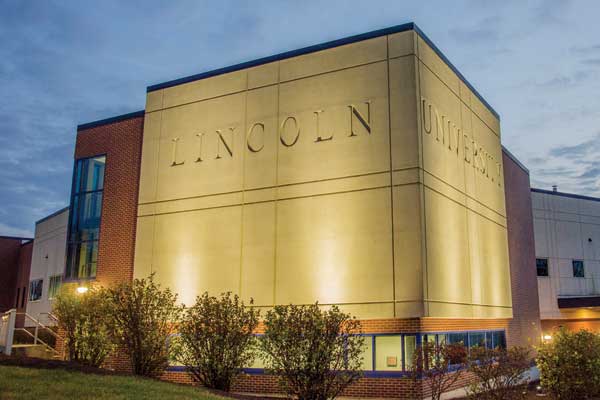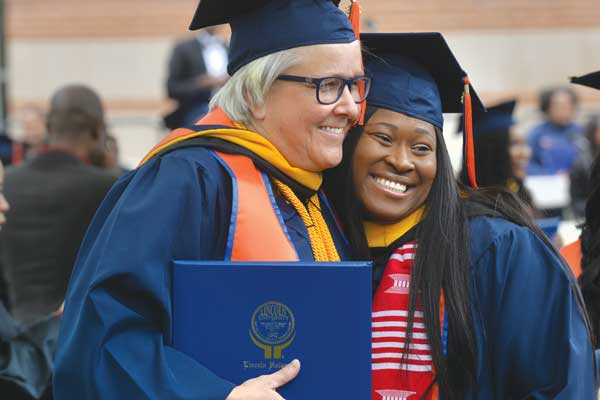The Planning Context
- Higher Education Landscape
Small College Survival
While most institutions of higher education are grappling with the impact of shifting demographics, rising costs and reduced state and federal support on their operations, this climate make small colleges especially vulnerable. Additional characteristics of the University, including it being a semi-private, liberal arts and historically Black institution, provide further stressors. In such an environment, the historical funding model adopted by many small, private,and semi-private liberal arts institutions is particularly challenged.
This model is built on the premise that institutional operating budgets will grow at a slow pace, but remain balanced by complementary revenue growth from tuition increases and steady fundraising. It is further assumed that good stewardship of the resources towards fulfilling the institution mission will allow all such factors to remain stable. In 2017, the Association of Governing Boards for Universities and Colleges (AGB) published a white paper suggesting that the current climate makes it harder to realize this model and is threatening the long-term stability of small institutions. The paper offers alternative models toward promoting lasting fiscal health. Of particular interest are (1) the Distinctive Program Model, which utilizes a unique niche approach to brand, recruit and retain students, and (2) the Expansion Model, which focuses on additional professional or graduate programs to enhance enrollment. Both offer great models that may be applied to Lincoln University as a small, semi-private, liberal arts institution.
Focus on Skill Development
The 21st century economy is best characterized as global, dynamic and knowledge based. Many of the shifts and changes in industry are fueled by rapid advances in science and technology. As a result of these factors, the world is experiencing unprecedented levels of global competition and market disruptions. In response, many higher education experts suggest that universities redouble their efforts to develop and hone students’ intellectual and interpersonal skills toward producing graduates able to tool and retool themselves as needed. Current literature suggests that the liberal arts approach is the best method for achieving this end. Among other benefits, a liberal arts education uses curricular and co-curricular opportunities as vehicles for practicing and mastering important skills, such as writing, critical thinking, teamwork, cultural competency and leadership. Central to our strategic goals, the University’s liberal arts approach must place great emphasis on the intellectual development of students.
High Impact Pedagogies
High Impact Pedagogies (HIPs) are instructional approaches that make a significant difference to student persistence, learning outcomes and student success. Such approaches include first-year seminars, learning communities, writing-intensive courses, collaborative assignments and projects, undergraduate research, diversity/global learning, service learning, community-based learning, internships, and capstone courses and projects. HIPs positively relate to persistence and grade point averages, higher rates of student-faculty interaction, increases in critical thinking and writing skills, greater appreciation for diversity and higher student engagement. Moreover, students from ethnic-minority backgrounds, lower socio-economic-status and/or with lower academic credentials tend to gain more from these practices than other students. To maximize the success of the students that the University serves, it is crucial that the University create curricular and co-curricular opportunities based upon such powerful instructional approaches.
- Higher Education in Pennsylvania
Lincoln University has been a member of the Commonwealth System of Higher Education since 1972. As a state-related institution, the Commonwealth provides the University with an annual financial appropriation in exchange for offering tuition discounts to students who are residents of Pennsylvania. Nearly 50 percent of all University students are citizens of the Commonwealth. The University’s state appropriation represents nearly 25 percent of Lincoln’s annual operating budget (an increase from 17.5% in 2012). The University also receives financial assistance for capital projects. In recent years, there has been much debate among state legislators regarding funding the state-related universities which—in addition to Lincoln University—includes Penn State, Pittsburgh and Temple universities. The debates have often caused delays in the passing of the state budget. While there appears great support for Lincoln University at the local and state levels, state investment in higher education is decreasing nationwide. This trend must be considered as the University plans for its strategic investments over the next five years.
- Historically Black Colleges & Universities
A December 2017 report commissioned by the United Negro College Fund highlights the continued positive impact of HBCUs on individuals as well as local and national economies. The report notes that African Americans who graduate from HBCUs fare better personally and financially than those who receive degrees from non-HBCUs. Currently, HBCUs enroll nearly 10 percent and graduate nearly 17 percent of all African Americans attending college—while only representing 3 percent of the nation’s higher education institutions. The study reports that HBCUs generate a total economic impact of nearly $15 billion; for every $1 million spent by an HBCU, 13 new jobs are created*. In spite of such data, HBCUs continue to struggle with enrollments, ironically, due to expanded access created by affirmative action. Shrinking enrollments, coupled with small endowments and grant portfolios, are creating financial strains on many Black institutions. The result: crumbling infrastructures, lack of scholarships and declining outcomes in terms of retention and graduation rates. Responses to this issue have included mission creep, reduction in admission criteria and gutted programs as some institutions struggle to garner the resources necessary to stay afloat. As a result, many HBCUs are straining to define their distinctive worth. Clearly defining Lincoln University’s contemporary value proposition must become the foundation for its strategic goals. * https://www.uncf.org/news/entry/hbcus-make-america-strong




